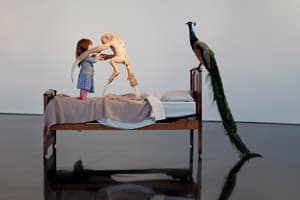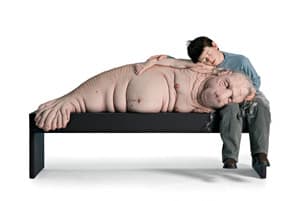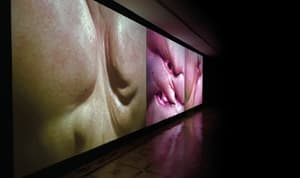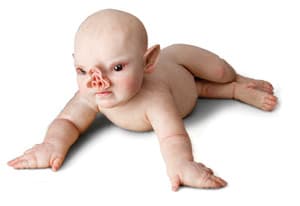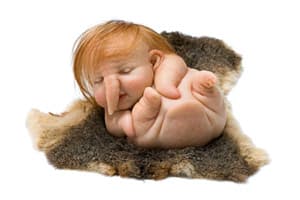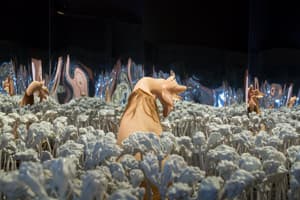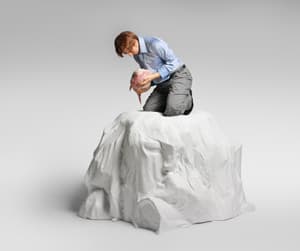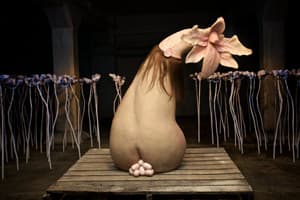
Posthuman body
Hyperrealist sculpture finds its most fantastical expression in the work of Patricia Piccinini. An initial seduction engages us in the conceptual problematics of the body. Curiously drawn to an immaculate surface, we are subsequently struck by the ethical issues posed. These works evoke the new possibilities offered by biotechnology and transgenic processes, forcing us to consider the contemporary sociopolitical issues governing the body.
Several works present a world in which genetic modification has radically transformed the body. With their diminutive scale and furry features, these sculptures appeal to our nurturing instincts. As we struggle to identify species, it becomes apparent that the questions at play are what we consider to be natural and biologically possible. Here, hybrid human bodies are posed alongside nature’s ‘hyperreal’ creations. Piccinini points out that nature and science are equally responsible for the production of fantastical creatures.
Optimism for a harmonious future between humans and transgenic beings is embedded throughout Piccinini’s practice, and is expressed in the face of the child in The welcome guest. Another work, The long awaited poses a redefinition of family, where intergenerational care is also an acceptance of difference. In the adjacent room, we discover Bootflower. This creature has no eyes in its pink, fleshy face, yet it plays with our anthropomorphic instinct to ascribe human characteristics and emotion onto objects we see as sharing human features. In this way, we recognise an evolution of the human form. Rather than confronting us with a threat, Piccinini connects us. We wonder at Bootflower’s biological functions and find empathy with a new parent rearing offspring.


